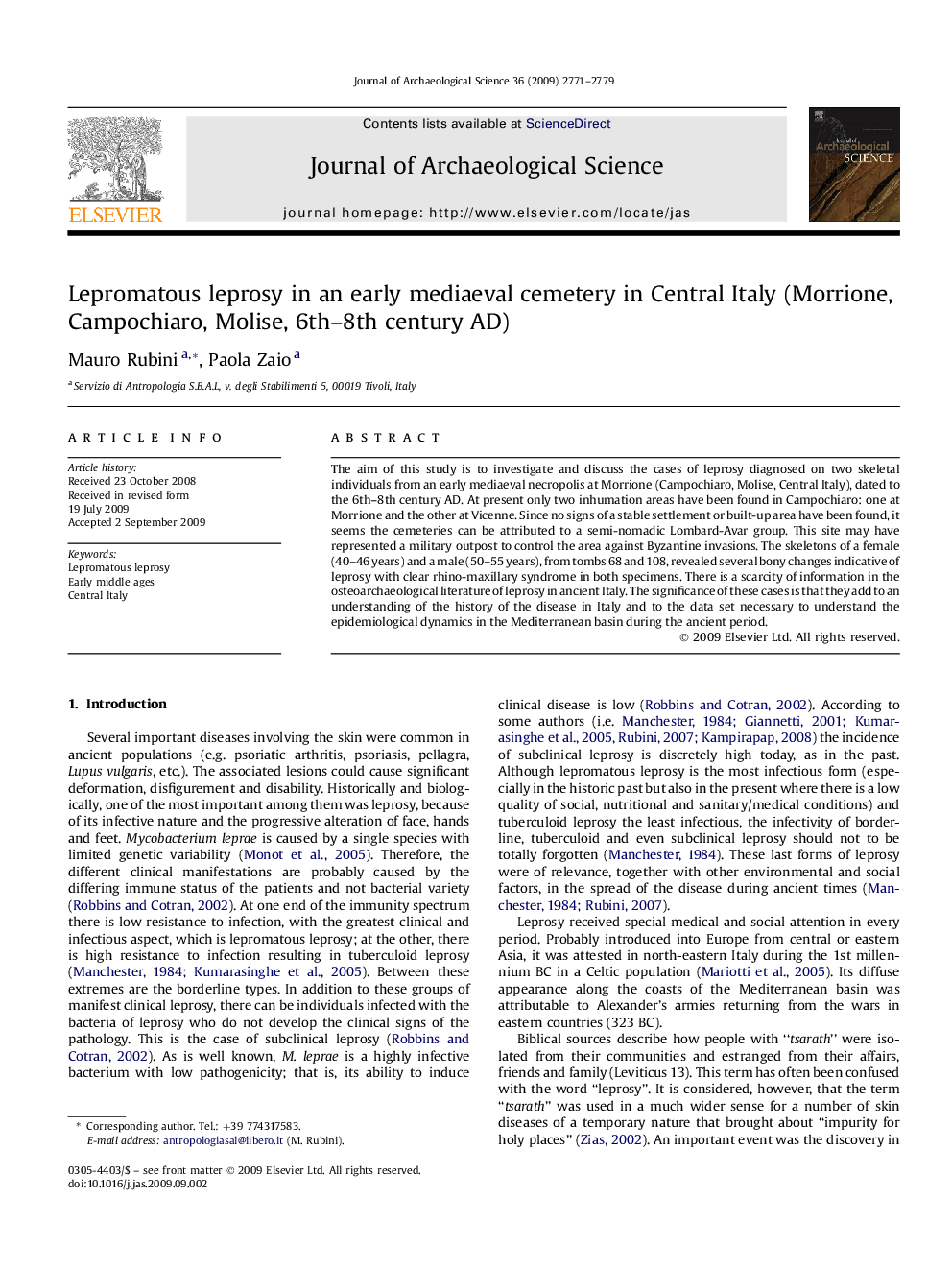| Article ID | Journal | Published Year | Pages | File Type |
|---|---|---|---|---|
| 1036093 | Journal of Archaeological Science | 2009 | 9 Pages |
The aim of this study is to investigate and discuss the cases of leprosy diagnosed on two skeletal individuals from an early mediaeval necropolis at Morrione (Campochiaro, Molise, Central Italy), dated to the 6th–8th century AD. At present only two inhumation areas have been found in Campochiaro: one at Morrione and the other at Vicenne. Since no signs of a stable settlement or built-up area have been found, it seems the cemeteries can be attributed to a semi-nomadic Lombard-Avar group. This site may have represented a military outpost to control the area against Byzantine invasions. The skeletons of a female (40–46 years) and a male (50–55 years), from tombs 68 and 108, revealed several bony changes indicative of leprosy with clear rhino-maxillary syndrome in both specimens. There is a scarcity of information in the osteoarchaeological literature of leprosy in ancient Italy. The significance of these cases is that they add to an understanding of the history of the disease in Italy and to the data set necessary to understand the epidemiological dynamics in the Mediterranean basin during the ancient period.
